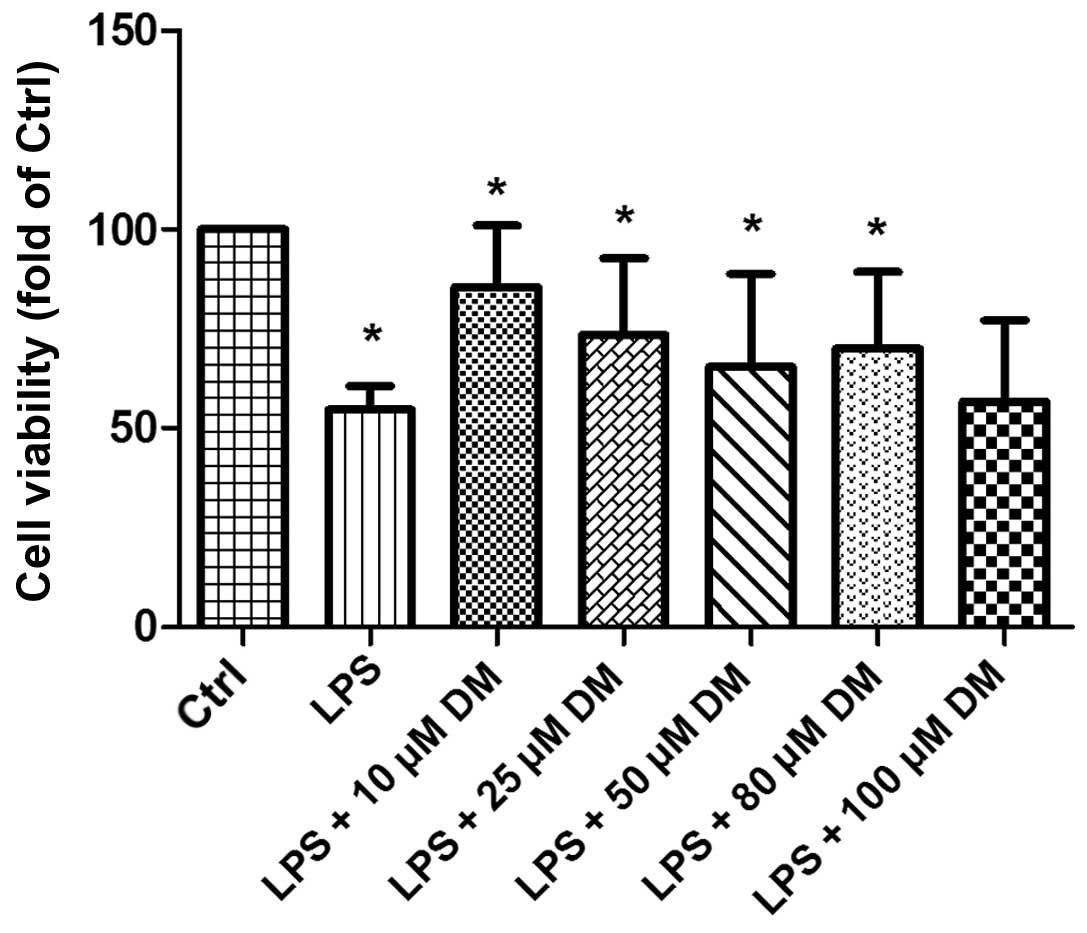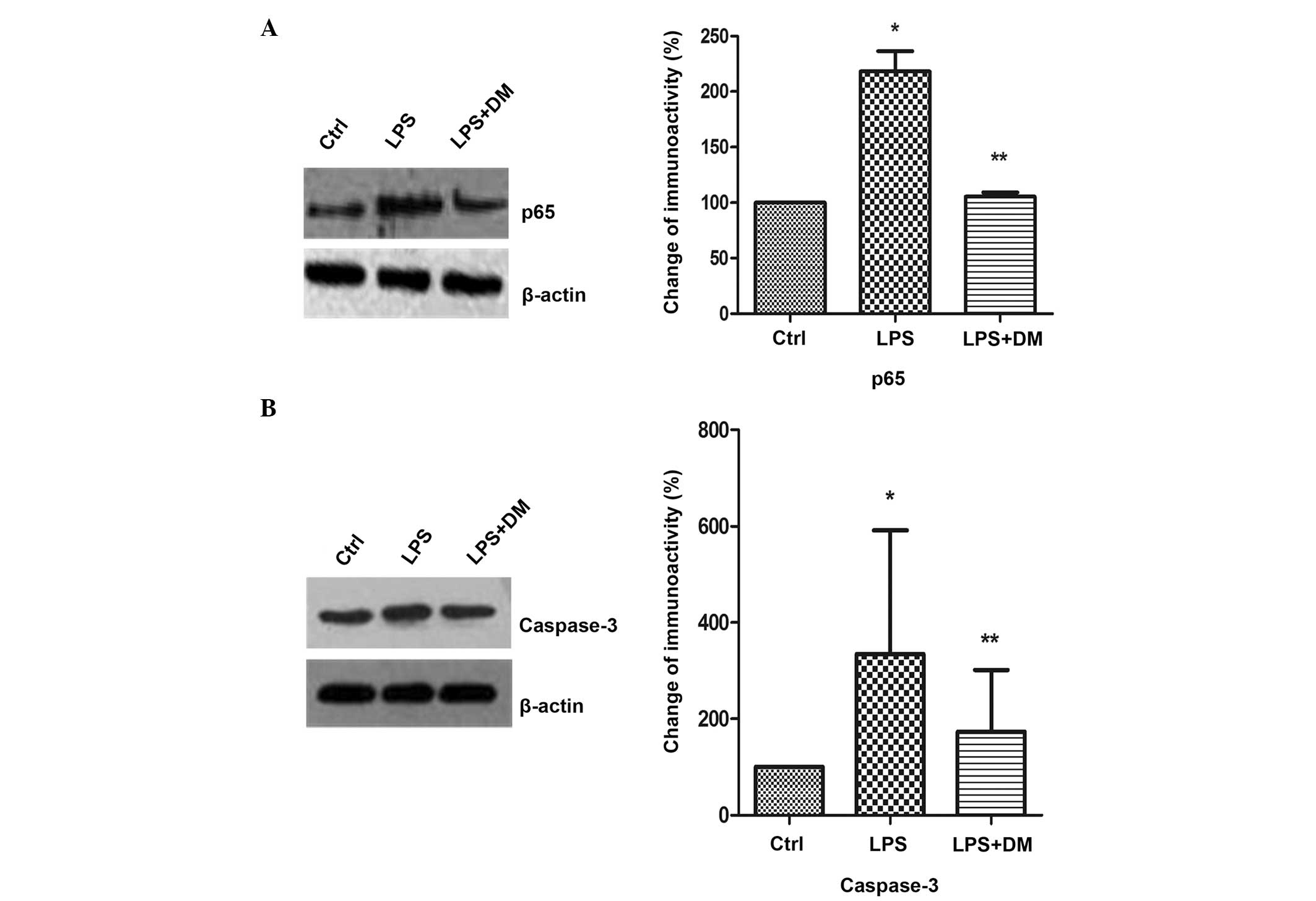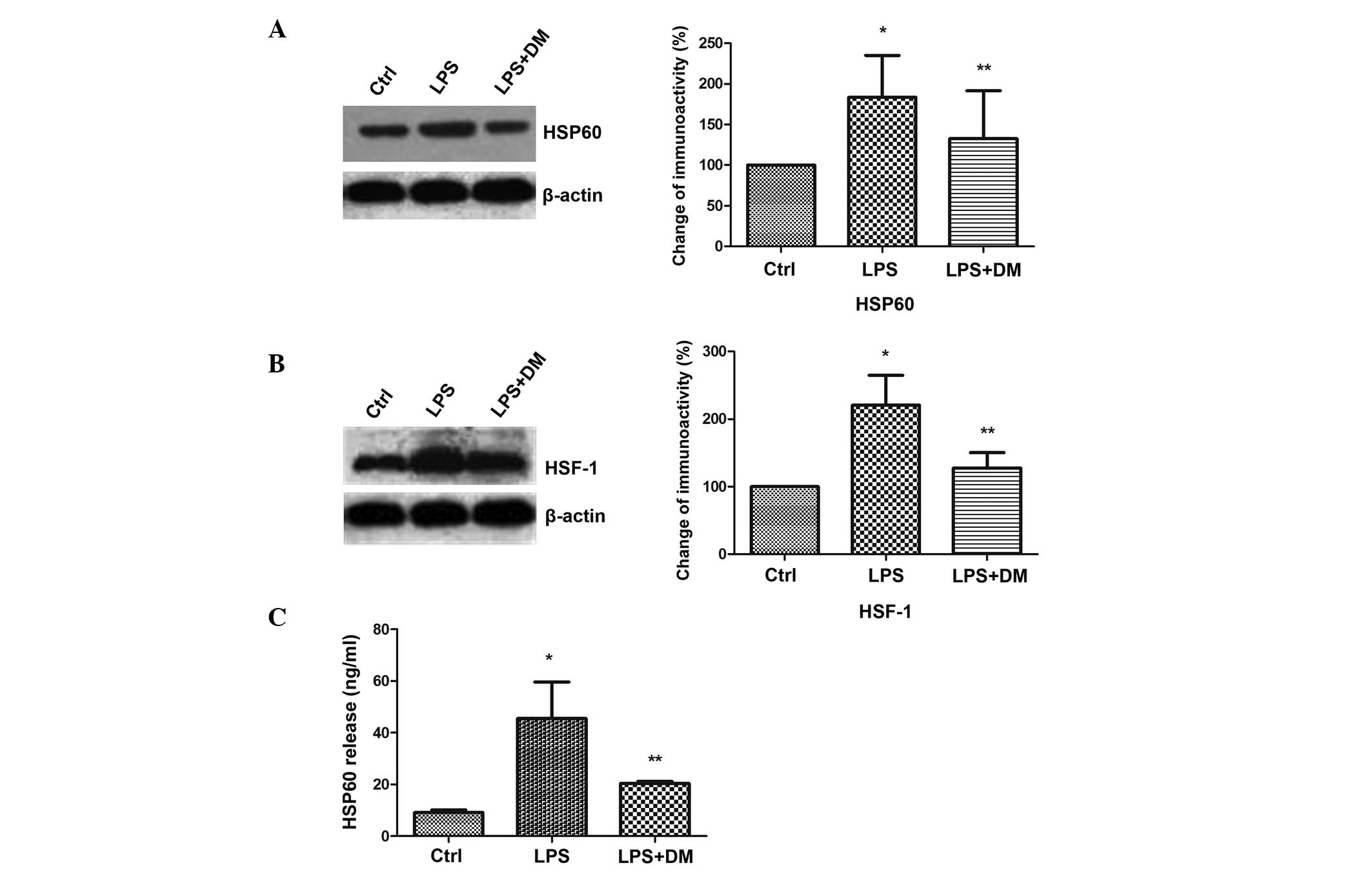|
1
|
Block ML, Zecca L and Hong JS:
Microglia-mediated neurotoxicity: uncovering the molecular
mechanisms. Nature Rev Neurosci. 8:57–69. 2007. View Article : Google Scholar
|
|
2
|
Hanisch UK and Kettenmann H: Microglia:
active sensor and versatile effector cells in the normal and
pathologic brain. Nat Neurosci. 10:1387–1394. 2007. View Article : Google Scholar : PubMed/NCBI
|
|
3
|
Gehrmann J, Matsumoto Y and Kreutzberg GW:
Microglia: intrinsic immuneffector cell of the brain. Brain Res
Rev. 20:269–287. 1995. View Article : Google Scholar : PubMed/NCBI
|
|
4
|
Innamorato NG, Lastres-Becker I and
Cuadrado A: Role of microglial redox balance in modulation of
neuroinflammation. Curr Opin Neurol. 22:308–314. 2009. View Article : Google Scholar : PubMed/NCBI
|
|
5
|
Lynch MA: The multifaceted profile of
activated microglia. Mol Neurobiol. 40:139–156. 2009. View Article : Google Scholar : PubMed/NCBI
|
|
6
|
Li YH, Teng P, Wang Y, et al: Expression
and regulation of HSP60 in activated microglia cells. J Ningxia Med
Coll. 8:712–714. 2011.
|
|
7
|
Zhang D, Sun L, Zhu H, et al: Microglial
LOX-1 reacts with extracellular HSP60 to bridge neuroinflammation
and neurotoxicity. Neurochem Int. 61:1021–1035. 2012. View Article : Google Scholar : PubMed/NCBI
|
|
8
|
Lehnardt S, Schott E, Trimbuch T, et al: A
vicious cycle involving release of heat shock protein 60 from
injured cells and activation of toll-like receptor 4 mediates
neurodegeneration in the CNS. J Neurosci. 28:2320–2331. 2008.
View Article : Google Scholar : PubMed/NCBI
|
|
9
|
Thanos S, Mey J and Wild M: Treatment of
the adult retina with microglia-suppressing factors retards
axotomy-induced neuronal degradation and enhances axonal
regeneration in vivo and in vitro. J Neurosci. 13:455–466.
1993.PubMed/NCBI
|
|
10
|
Thanos S: The relationship of microglial
cells to dying neurons during natural neuronal cell death and
axotomy-induced degeneration of the rat retina. Eur J Neurosci.
3:1189–1207. 1991. View Article : Google Scholar : PubMed/NCBI
|
|
11
|
Teng P, Li YH, Cheng WJ, et al:
Neuroprotective effects of Lycium barbarum polysaccharides in
lipopolysaccharide-induced BV2 microglia cells. Mol Med Rep.
7:1977–1981. 2013.PubMed/NCBI
|
|
12
|
Rangarajan P, Eng-Ang L and Dheen ST:
Potential drugs targeting microglia: current knowledge and future
prospects. CNS Neurol Disord Drug Targets. 12:799–806. 2013.
View Article : Google Scholar : PubMed/NCBI
|
|
13
|
Shin EJ, Bach JH, Lee SY, Kim JM, Lee JJ,
Hong JS, et al: Neuropsychotoxic and neuroprotective potentials of
dextromethorphan and its analogs. J Pharmacol Sci. 116:137–148.
2011. View Article : Google Scholar : PubMed/NCBI
|
|
14
|
Mousavi SA, Saadatnia M, Khorvash F,
Hoseini T and Sariaslani P: Evaluation of the neuroprotective
effect of dextromethorphan in the acute phase of ischaemic stroke.
Arch Med Sci. 7:465–469. 2011. View Article : Google Scholar
|
|
15
|
Liu B, Du L and Hong JS: Naloxone protects
rat dopaminergic neurons against inflammatory damage through
inhibition of microglia activation and superoxide generation. J
Pharmacol Exp Ther. 293:607–617. 2000.PubMed/NCBI
|
|
16
|
Liu Y, Qin L, Wilson BC, et al: Inhibition
by naloxone stereoisomers of beta-amyloid peptide (1–42)-induced
superoxide production in microglia and degeneration of cortical and
mesencephalic neurons. J Pharmacol Exp Ther. 302:1212–1219. 2002.
View Article : Google Scholar : PubMed/NCBI
|
|
17
|
Chang RC, Rota C, Glover RE, Mason RP and
Hong JS: A novel effect of an opioid receptor antagonist, naloxone,
on the production of reactive oxygen species by microglia: a study
by electron paramagnetic resonance spectroscopy. Brain Res.
854:224–229. 2000. View Article : Google Scholar : PubMed/NCBI
|
|
18
|
Liu B, Du L, Kong LY, et al: Reduction by
naloxone of lipopolysaccharide-induced neurotoxicity in mouse
cortical neuron-glia co-cultures. Neuroscience. 97:749–756. 2000.
View Article : Google Scholar : PubMed/NCBI
|
|
19
|
Liu Y, Qin L, Li G, et al:
Dextromethorphan protects dopaminergic neurons against
inflammation-mediated degeneration through inhibition of microglial
activation. J Pharmacol Exp Ther. 305:212–218. 2003. View Article : Google Scholar : PubMed/NCBI
|
|
20
|
Li G, Liu Y, Tzeng NS, et al: Protective
effect of dextromethorphan against endotoxic shock in mice. Biochem
Pharmacol. 69:233–240. 2005. View Article : Google Scholar : PubMed/NCBI
|
|
21
|
Hansen JJ, Bross P, Westergaard M, et al:
Genomic structure of the human mitochondrial chaperonin genes:
HSP60 and HSP10 are localised head to head on chromosome 2
separated by a bidirectional promoter. Hum Genet. 112:71–77. 2003.
View Article : Google Scholar
|
|
22
|
Lin L, Kim SC, Wang Y, Gupta S, et al:
HSP60 in heart failure: abnormal distribution and role in cardiac
myocyte apoptosis. Am J Physiol Heart Circ Physiol.
293:H2238–H2247. 2007. View Article : Google Scholar : PubMed/NCBI
|
|
23
|
Kreutzberg GW: Microglia: a sensor for
pathological events in the CNS. Trends Neurosci. 19:312–318. 1996.
View Article : Google Scholar : PubMed/NCBI
|
|
24
|
Park E, Kim DY and Chun HS: Resveratrol
inhibits lipopolysaccharide-induced phagocytotic activity in BV2
cells. J Korean Soc Appl Biol Chem. 55:803–807. 2012. View Article : Google Scholar
|
|
25
|
Karlstetter M, Lippe E, Walczak Y, et al:
Curcumin is a potent modulator of microglial gene expression and
migration. J Neuroinflammation. 8:1252011. View Article : Google Scholar : PubMed/NCBI
|
|
26
|
Park HY, Han MH, Park C, et al:
Anti-inflammatory effects of fucoidan through inhibition of NF-κB,
MAPK and Akt activation in lipopolysaccharide-induced BV2 microglia
cells. Food Chem Toxicol. 49:1745–1752. 2011. View Article : Google Scholar : PubMed/NCBI
|
|
27
|
Britton P, Lu XC, Laskosky MS and Tortella
FC: Dextromethorphan protects against cerebral injury following
transient, but not permanent, focal ischemia in rats. Life Sci.
60:1729–1740. 1997. View Article : Google Scholar : PubMed/NCBI
|
|
28
|
Lesage AS, De Loore KL, Peeters L and
Leysen JE: Neuroprotective sigma ligands interfere with the
glutamate-activated NOS pathway in hippocampal cell culture.
Synapse. 20:156–164. 1995. View Article : Google Scholar : PubMed/NCBI
|
|
29
|
Prince DA and Feeser HR: Dextromethorphan
protects against cerebral infarction in a rat model of
hypoxia-ischemia. Neurosci Lett. 85:291–296. 1988. View Article : Google Scholar : PubMed/NCBI
|
|
30
|
Berman FW and Murray TF: Characterization
of [3H]MK-801 binding to N-methyl-D-aspartate receptors
in cultured rat cerebellar granule neurons and involvement in
glutamate-mediated toxicity. J Biochem Toxicol. 11:217–226. 1996.
View Article : Google Scholar
|
|
31
|
Craviso GL and Musacchio JM: High-affinity
dextromethorphan binding sites in guinea pig brain. I Initial
characterization. Mol Pharmacol. 23:619–628. 1983a.
|
|
32
|
Craviso GL and Musacchio JM: High-affinity
dextromethorphan binding sites in guinea pig brain. II Competition
experiments. Mol Pharmacol. 23:629–640. 1983b.
|
|
33
|
Khasnavis S, Jana A, Roy A, et al:
Suppression of nuclear factor-κB activation and inflammation in
microglia by physically modified saline. J Biol Chem.
287:29529–29542. 2012. View Article : Google Scholar : PubMed/NCBI
|
|
34
|
Gu JH, Ge JB, Li M, et al: Inhibition of
NF-κB activation is associated with anti-inflammatory and
anti-apoptotic effects of Ginkgolide B in a mouse model of cerebral
ischemia/reperfusion injury. Eur J Pharm Sci. 47:652–660. 2012.
View Article : Google Scholar : PubMed/NCBI
|
|
35
|
Woods DC, White YA, Dau C and Johnson AL:
TLR4 activates NF-κB in human ovarian granulosa tumor cells.
Biochem Biophys Res Commun. 409:675–680. 2011. View Article : Google Scholar : PubMed/NCBI
|
|
36
|
Soria JA, Arroyo DS, Gaviglio EA, et al:
Interleukin 4 induces the apoptosis of mouse microglial cells by a
caspase-dependent mechanism. Neurobiol Dis. 43:616–624. 2011.
View Article : Google Scholar : PubMed/NCBI
|
|
37
|
Burguillos MA, Deierborg T, Kavanagh E, et
al: Caspase signalling controls microglia activation and
neurotoxicity. Nature. 472:319–324. 2011. View Article : Google Scholar : PubMed/NCBI
|
|
38
|
Kim SC, Stice JP, Chen L, et al:
Extracellular heat shock protein 60, cardiac myocytes and
apoptosis. Circ Res. 105:1186–1195. 2009. View Article : Google Scholar : PubMed/NCBI
|
|
39
|
Wang Y, Chen L, Hagiwara N and Knowlton
AA: Regulation of heat shock protein 60 and 72 expression in the
failing heart. J Mol Cell Cardiol. 48:360–366. 2010. View Article : Google Scholar :
|
|
40
|
Kröncke KD, Fehsel K and Kolb-Bachofen V:
Inducible nitric oxide synthase and its product nitric oxide, a
small molecule with complex biological activities. Biol Chem Hoppe
Seyler. 376:327–343. 1995.PubMed/NCBI
|














